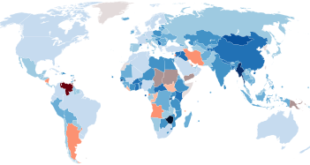CONTEXT:
Recently, the government has announced two major initiatives for ending the hazardous practice of manual cleaning of septic tanks and sewer lines and making the mechanised cleaning
must.
BACKGROUND:
- The Ministry of Social Justice and Empowerment will amend the law for making machine cleaning mandatory, whereas the Ministry of Housing and Urban Affairs has launched the Safaimitra Suraksha Challenge.
- Introduction of ‘The Prohibition of Employment as Manual Scavengers and their Rehabilitation (Amendment) Bill, 2020’ as a part of Social Justice and Empowerment Ministry’s National Action Plan.
AIM:
To modernise existing sewage system and coverage of nonsewered areas; setting up of faecal sludge and septage management system for mechanised cleaning of septic tanks, transportation and treatment of faecal sludge; equipping the municipalities, and setting up of Sanitation Response Units with help lines.
IMPORTANT CHANGES:
- The Bill proposes to completely mechanise sewer cleaning and provide better protection at work and compensation in case of accidents.
- The Bill proposes to make the law banning manual scavenging more stringent by increasing the imprisonment term and the fine amount.
- Currently, engaging any person for hazardous cleaning of sewers and septic tanks by any person or agency is punishable with imprisonment of up to five years or a fine of up to Rs. 5 lakh or both.
- The funds will be provided directly to the sanitation workers and not to the municipalities or contractors to purchase the machinery.
- Manual scavenging is defined as “the removal of human excrement from public streets and dry latrines, cleaning septic tanks, gutters and sewers”.
- As per the National Commission for Safai Karamcharis (NCSK), a total of 631 people have died in the country while cleaning sewers and septic tanks in the last 10 years.
- 2019 saw the highest number of manual scavenging deaths in the past five years. 110 workers were killed while cleaning sewers and septic tanks.
- This is a 61% increase as compared to 2018, which saw 68 cases of such similar deaths.
- Despite the introduction of several mechanised systems for sewage cleaning, human intervention in the process still continues.
- As per data collected in 2018, 29,923 people are engaged in manual scavenging in Uttar Pradesh, making it the highest in any State in India.
WHY MANUAL SCAVENGING:
- A number of independent surveys have talked about the continued reluctance on the part of state governments to admit that the practice prevails under their watch.
- Many times local bodies outsource sewer cleaning tasks to private contractors. However, many of them fly-by-night operators, do not maintain proper rolls of sanitation workers.
- In case after case of workers being asphyxiated to death, these contractors have denied any association with the deceased.
- The practice is driven by caste, class and income divides. It is linked to India’s caste system where so-called lower castes are expected to perform this job.
- The law has ended manual scavenging as a form of employment, however, the stigma and discrimination associated with it still linger on.
- The stigma and discrimination associated with manual scavenging makes it difficult for liberated manual scavengers to secure alternative livelihoods.
WAY FORWARD
States need to accurately enumerate the workers engaged in cleaning toxic sludge. If a law creates a statutory obligation to provide sanitation services on the part of state agencies, it will create a situation in which the rights of these workers will not hang in the air.
SOURCE: PIB
 Chinmaya IAS Academy – Current Affairs Chinmaya IAS Academy – Current Affairs
Chinmaya IAS Academy – Current Affairs Chinmaya IAS Academy – Current Affairs



